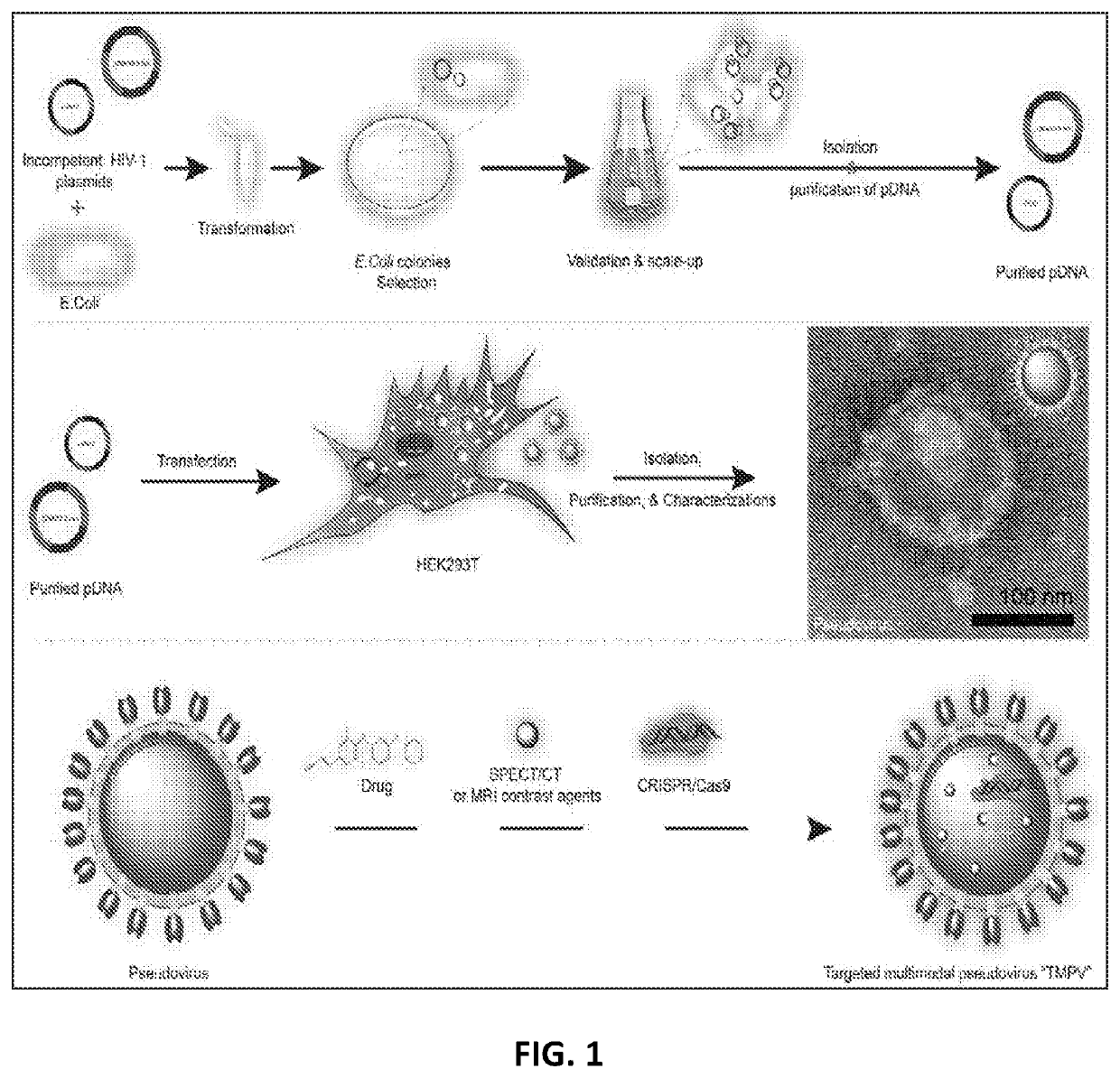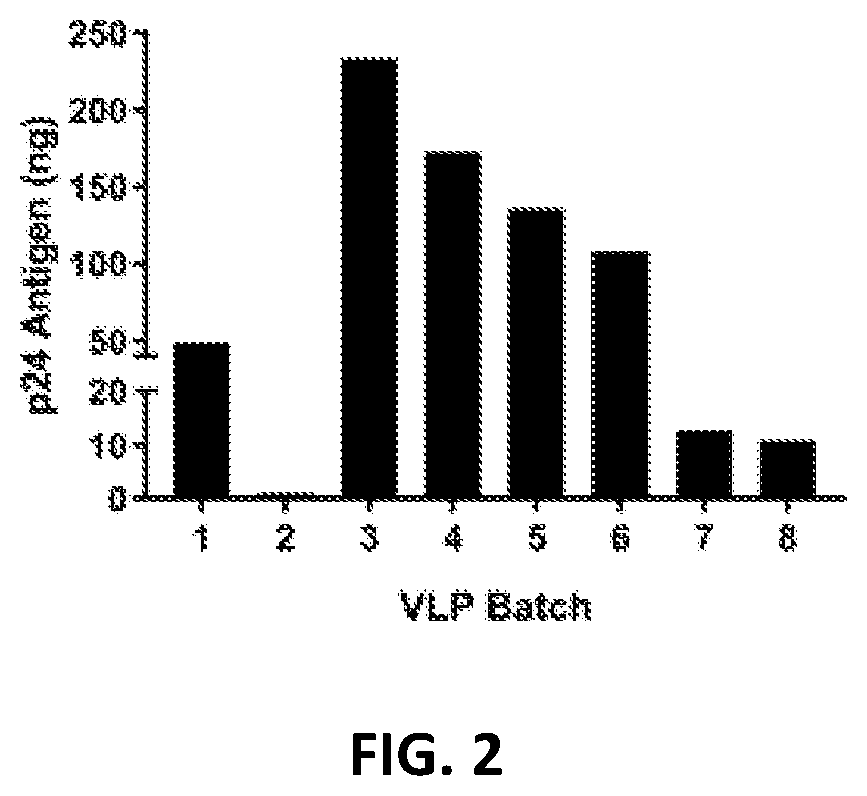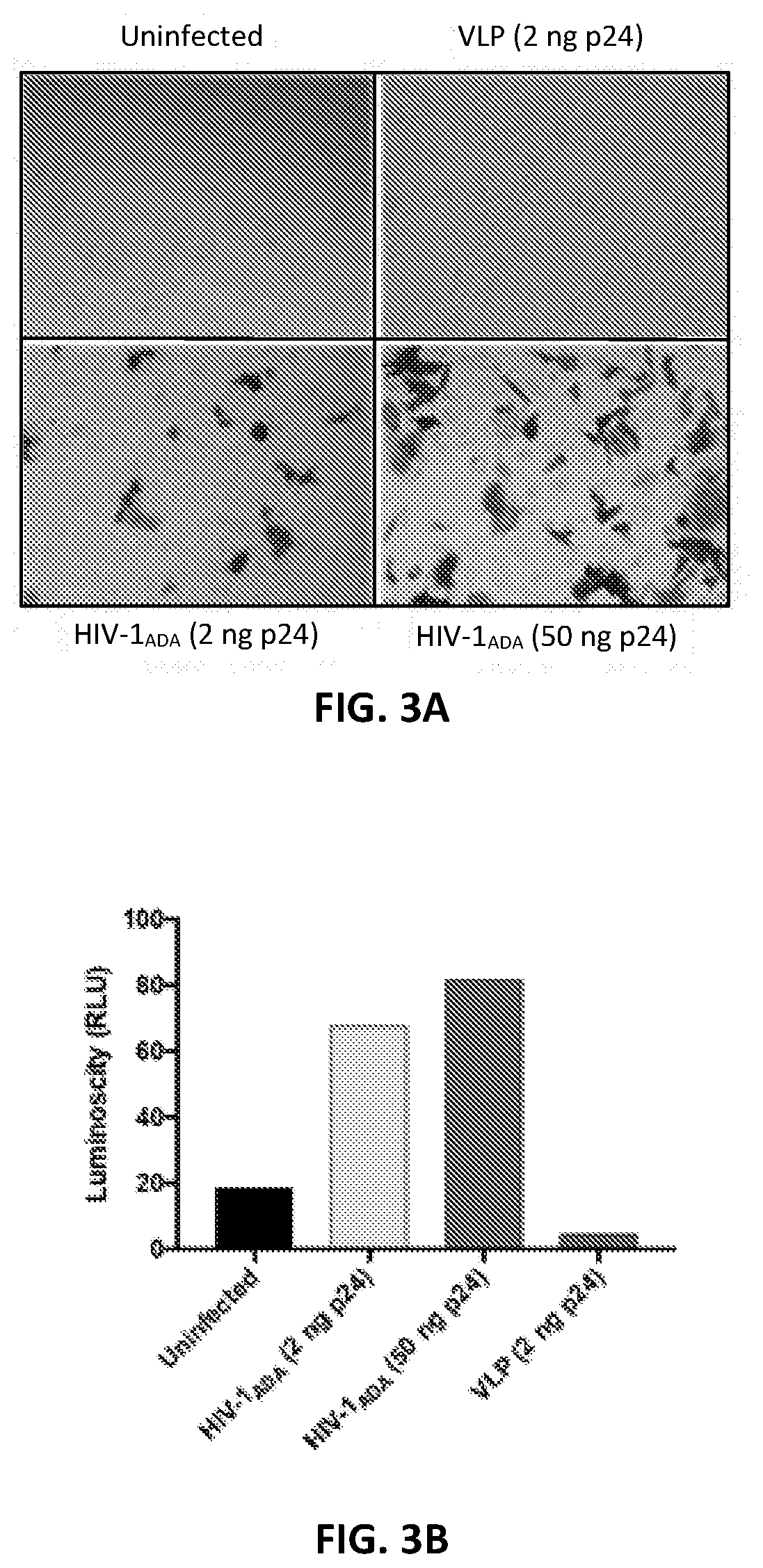Virus-like particles and methods of use thereof
a virus-like particle and virus technology, applied in the direction of viruses/bacteriophages, biochemistry apparatus and processes, peptide sources, etc., can solve the problems of insufficient therapeutic access to viral reservoirs, rapid infection spread, and failure to eliminate hiv-1 proviral dna integrated copies from the host genom
- Summary
- Abstract
- Description
- Claims
- Application Information
AI Technical Summary
Benefits of technology
Problems solved by technology
Method used
Image
Examples
example
[0083]FIG. 1 provides a schematic for the synthesis of virus-like particles (VLPs). HIV-1 VLPs were manufactured by co-transfection of HEK293T with the packaging plasmid psPAX2 (NIH AIDS Reagent Program #11348) encoding HIV-1 Gag / Pro / Pol and pcDNA encoding HIV-1 envelope proteins. The plasmid pcDNA was derived from the 89.6 env gene that is both CCR5 (R5) and CXCR4 (X4) tropic. The created pseudotyped HIV-189.6 VLPs were labeled with fluorescent DiD (DiD (DiIC18 (5); 1,1′-dioctadecyl-3,3,3′,3′-tetramethylindodicarbo-cyanine, 4-chlorobenzenesulfonate salt) dye or loaded with antiretroviral drug (ARV) (rilpivirine, RPV), radiolabeled or encased with heavy metals to create a multimodal nanoparticle (111In / 177Lu / 99mTC / 64Cu / 131I, iron oxide or cobalt ferrite, other metals), or with reporter genes and drugs. The activity of each or all of these payloads was detectable by flow cytometry and SPECT / CT radiography. The dual R5 / X4-tropic VLPs were identified to improve targeting and delivery. ...
PUM
| Property | Measurement | Unit |
|---|---|---|
| Therapeutic | aaaaa | aaaaa |
Abstract
Description
Claims
Application Information
 Login to View More
Login to View More - R&D
- Intellectual Property
- Life Sciences
- Materials
- Tech Scout
- Unparalleled Data Quality
- Higher Quality Content
- 60% Fewer Hallucinations
Browse by: Latest US Patents, China's latest patents, Technical Efficacy Thesaurus, Application Domain, Technology Topic, Popular Technical Reports.
© 2025 PatSnap. All rights reserved.Legal|Privacy policy|Modern Slavery Act Transparency Statement|Sitemap|About US| Contact US: help@patsnap.com



